Back in August, my boyfriend and I were searching for a slice of autumn sun on Skyscanner but the Caribbean and other contenders came with a hefty price tag because we had to go in October half term…
The search ´Everywhere´ function on Skyscanner had us scrolling desperately until ´Dakar´ popped up and intrigued us with the image of a mysterious island (which turned out to be Gorée). It was fate. Less than 30+ degrees in late October, a 7 hour trip with a layover in Lisbon and just down the coast from the Senagalese ´Riviera´.
Sign me up.
I´d never been to Africa before and all I knew about Senegal was that it was the most Westerly part of the continent and home to ya boy, Akon. After speaking with friends, family members and colleagues about the trip, some of them definitely thought we were about to get ´locked up´ but luckily they were proved wrong…
Senegal for me was fiery sunsets, sips of sweet bissap juice, the sound of sabar drums and evening prayers from nearby mosques and a feeling that anything was possible at any moment. It was a place to surrender to.
The experience took me completely out of my comfort zone, knowing that I would barely be able to communicate with locals was a big one for me, being a linguist who loves nothing more than a chat. Senegal has French as its official language, although only 12% of the population can speak it as Wolof is the national language. Being a language learner again, I was put in the shoes of my Roots Up students and it gave me a new perspective on trying to get by when you’re nervous to start speaking.
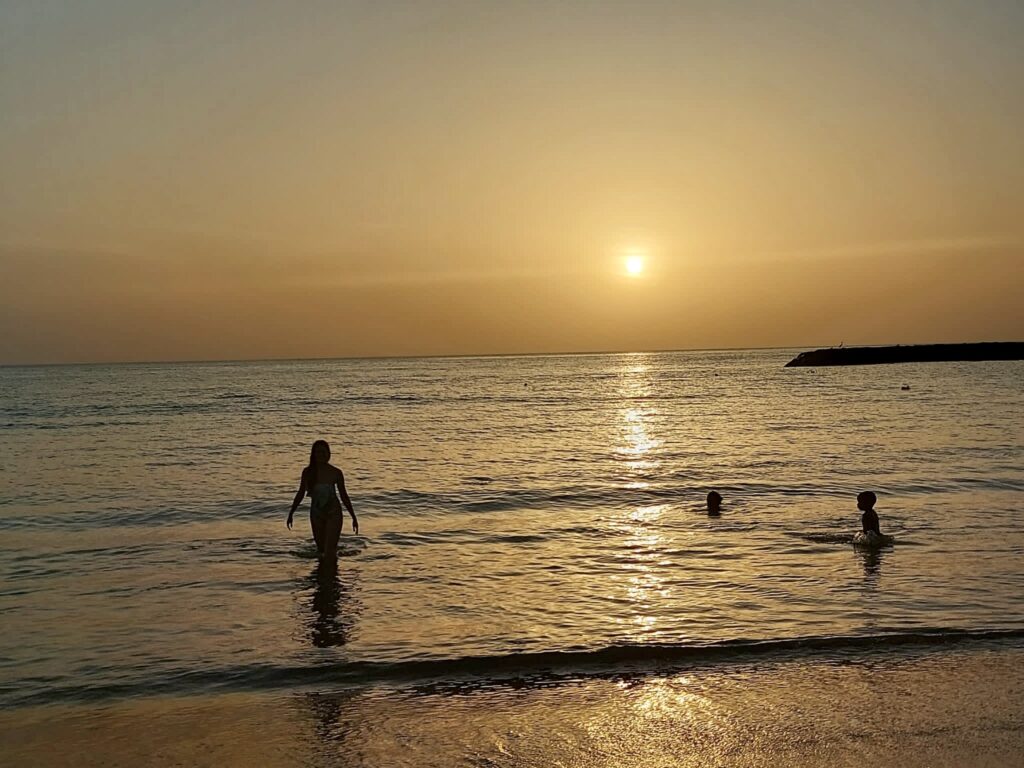
Wanna get to grips with local languages?
- Listen to some podcasts to immerse yourself on the plane. Surfing is huge in Senegal and a good conversation starter! (French – Est-ce que tu surfes? Do you surf?) Episode 18: Surfer au Sénégal (Surfing in Senegal) – Duolingo
- Learn set phrases in French : from directions in cabs, ordering drinks, to pharmacy trips (we had a few!) and keep practising them. Do a few role plays (speaking out loud) to get you feeling comfortable with the language and keep this phrase book in your day bag.
- Use the pronunciation feature on the Offline Google Translate app to listen to native speakers and master tricky sounds There is no 3/4G so offline apps are your best friend.
- Remember key cognates (words that sound similar to English) like une biere!
- Ask locals to teach you Wolof. They lit up every time I used a phrase or word in their national language.
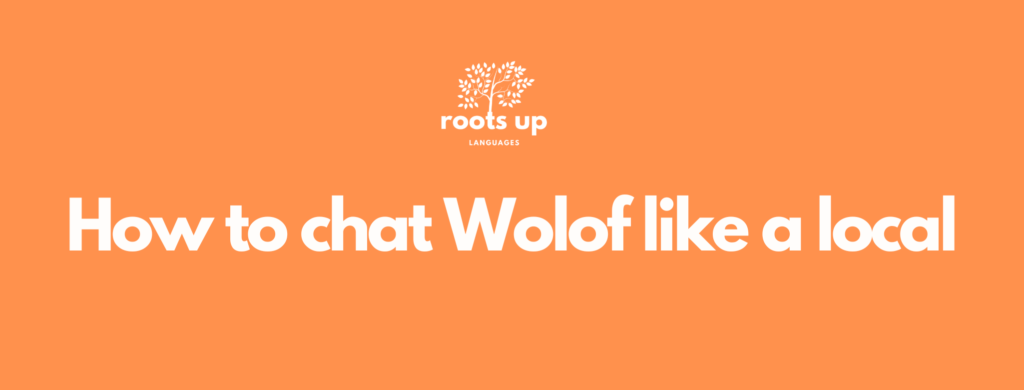
Here are 10 essential phrases to get you started:
Salaam aleekum (sa-laam-a-ley-kum): Hello
Malekum salaam (mal-ay-kum-sal-aam): Hello to you
Na nga def (nan-ga-def): How are you?
Maa ngi fi (man-gi-fi): I’m fine, thanks
Nanga tudd (nan-ga-tud): What’s your name?
Maa ngi tudd (man-gee-tud): My name is…
Jërejëf (je-re-jef): Thank you
Waaw / déedéyt (wao / dey-dey): Yes / no
Neex na (nay-na) – It´s delicious
Mangi dem (man-gee-dem): Goodbye
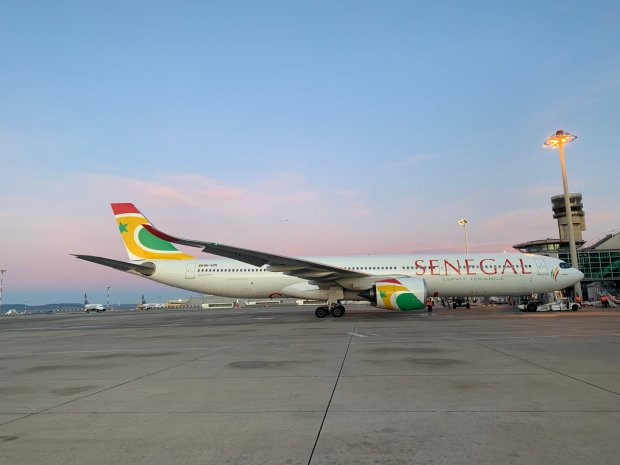
How do you get there?
We flew from London Gatwick to Lisbon (2h 45) and had a pretty long layover but unfortately couldn’t leave the airport as they were having signalling issues! If things were running smoothly at the airport we would have got a Uber (25 mins) into the centre and had some comida (food) at Taberna da Rua das Flores and a rooftop cerveja (beer) at PARK. I still managed to speak some Portuguese in the airport and grab an obligatory pastel de nata before the next leg of the journey!
Tip: To get the most of leaving the airport, you’ll need at least 6 hours between flights.
From Lisbon to Blaise Diagne Airport it’s another 4h15 and the experience on arrival is a bit mad. Here are some things I wish I had known:
- Get an Orange prepaid SIM with a bit of data for the week from the kiosk in arrivals – you can’t get internet on your provider and it’d be useful to look up prices/ costs / norms throughout your stay when you’re out and about.
- Even if you prebook a taxi (we did through Booking.com) they may not show up but there are plenty of taxis outside arrivals.
- Taxis from Blaise Diagne Airport to Dakar can take up to 2 hours in rush hour but at other times just over an hour
- The journey should cost 30,000CFA max but drivers will try to charge you double/triple that price – always agree on this before hopping in!
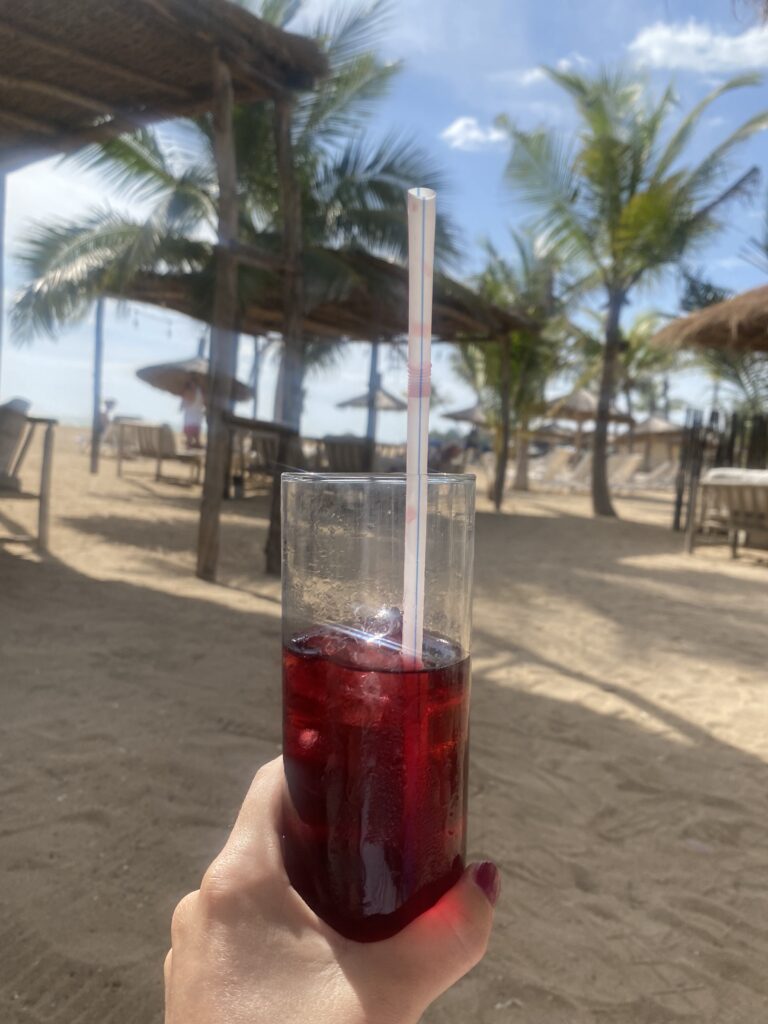
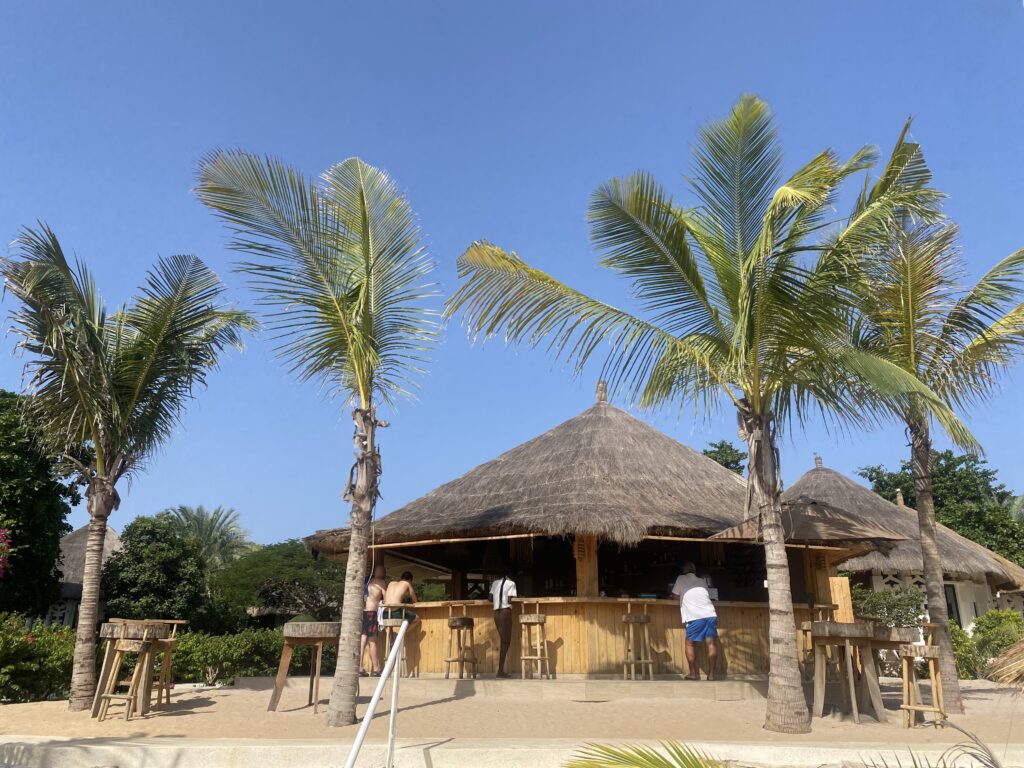

Where do you recommend staying?
Dakar – La Résidence (Almadies)
This place feels like a sanctuary in the middle of the humming and buzzing of Dakar. From the hotel, you can literally be sitting in a beach side bar perched over the Atlantic quicker than you can get a tube on the Victoria line. The coastal road, the Cor de Almadies, is a banging spot for seafood (although I would stay away from shellfish!) and live music. Try the national fish and jasmine jollof rice dish Thieboudienne (Chee-boo-Jen) and a night at Soleil Cafe or La Cabane Du Surfeur.
Saly – Hotel Royam
Dragon flies dancing, glossy starling’s tweeting, butterflies darting between the palms hanging over the sea facing pool. Royam is a dreamy spot to set up camp in Saly. I would definitely recommend getting out of the hotel though after chilling by the pool and mixing with locals as it is pretty resort-y (see what we got up to below!) If I went again I would probably stay in an Airbnb or guest house too.
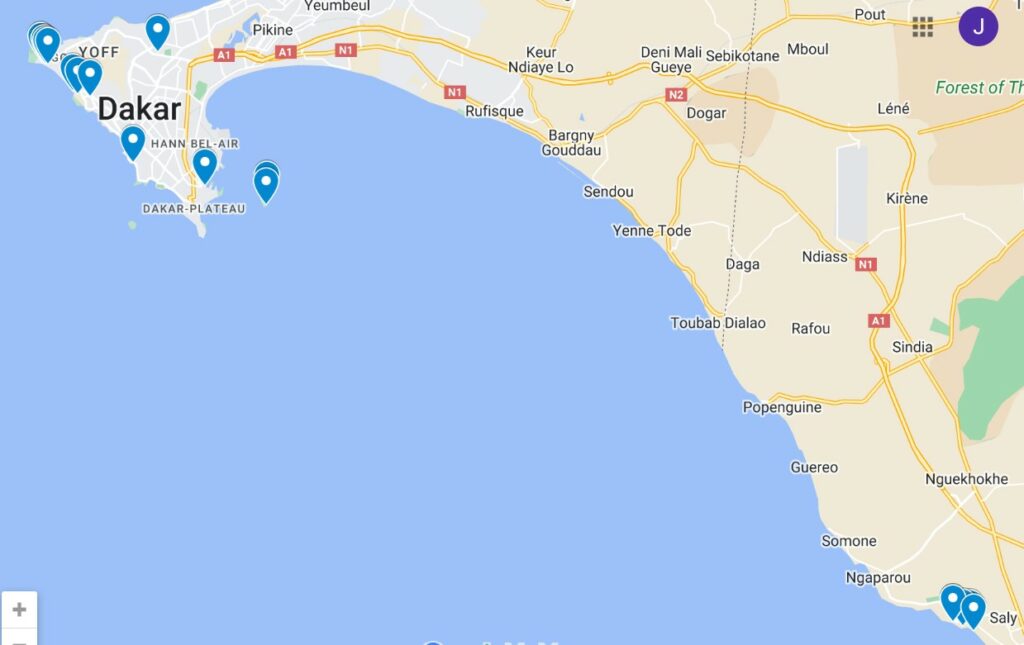
Where should you visit?
We were only in Dakar for 4 days (2 days either side of Saly down the coast) and think it was the perfect amount of time to explore the city although there is so much more to do if you have the time. I´ve made a map on Google and starred all of the places we visited and mentioned below – if you have any questions feel free to drop me an email on jessica@rootsuplanguages.co.uk!
Dakar and surrounding area
Dakar´s Mamelles (breasts) are a lovely set of twin hills in Oukam, a district with sweeping views over the Cap Vert peninsula.
Plage des Mamelles – a hidden cove and popular swimming spot for locals – the waves here are next level though so I’d just dip your toes in unless you´re a really strong swimmer. Go for a chilled afternoon bev in the beach bar perching over the sea on the road down (didn´t have a name) but starred on map! Chez Tam and Niga are two other beach shacks close by but were closed when we were there!
La Phare des Mamelles for a 360 sunset from the lighthouse restaurant and bar and live music til late (timetable here). Drinks and dinner are bit expensive but definitely worth it for the views. To get to the top of the hill, hop on a mini bus from the carpark. During the day you can also pop into museum if you wanna learn more about the history of the lighthouse that has guided ships around Africa’s westernmost tip since 1864 (5000CFA entrance).
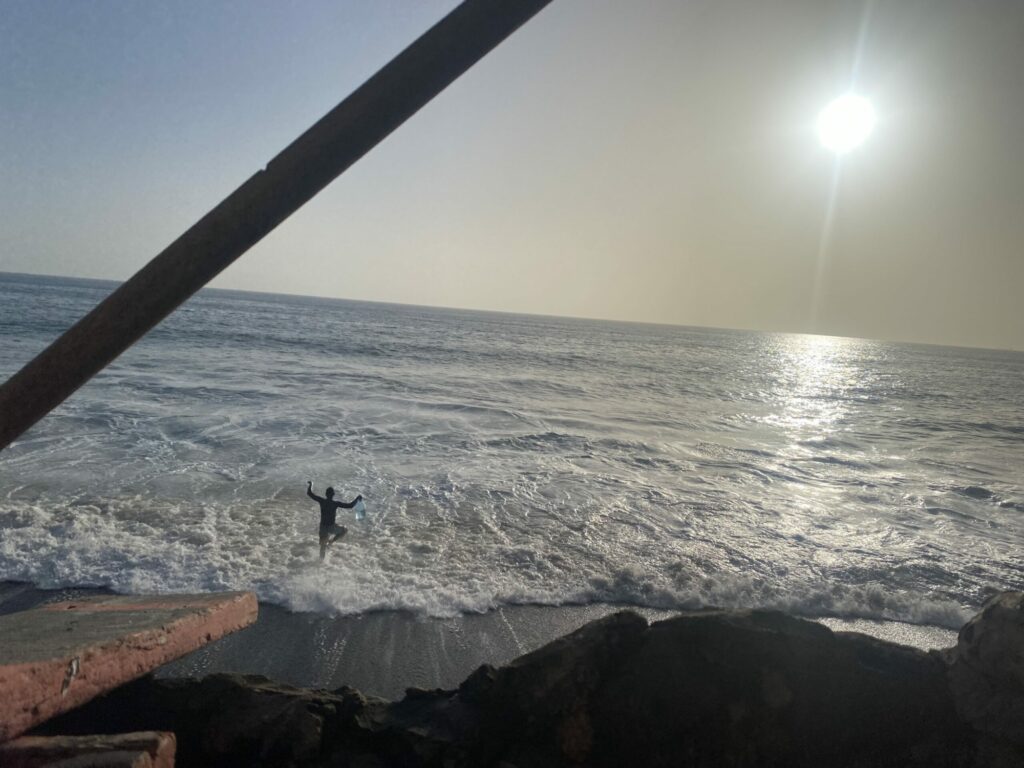
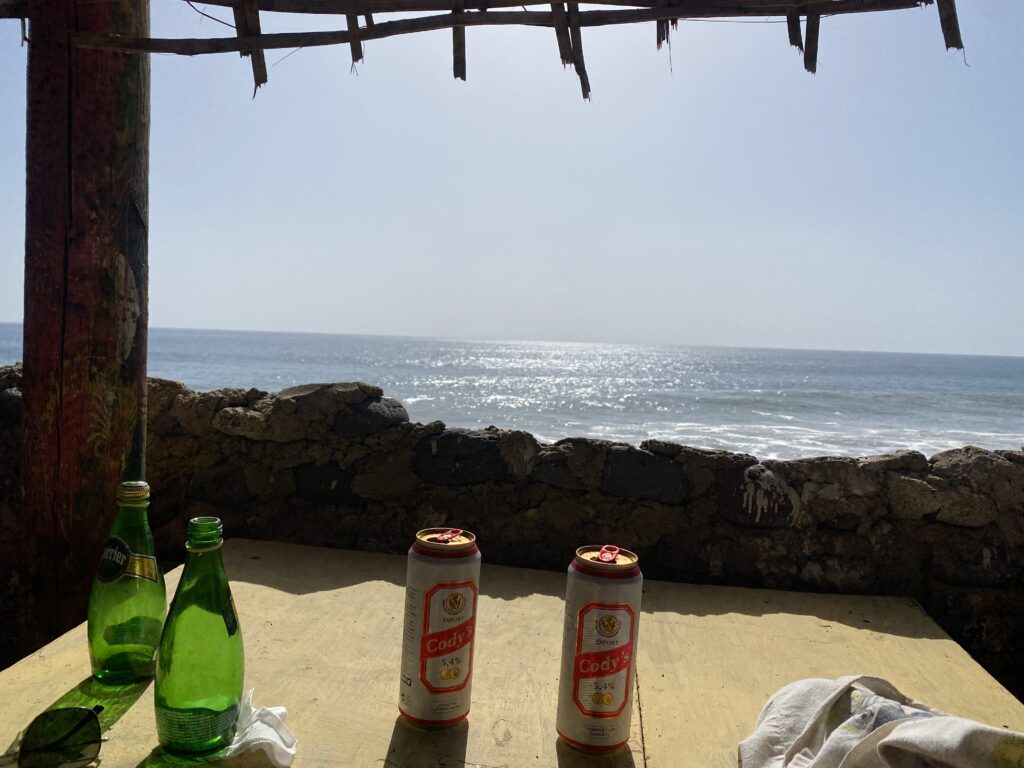
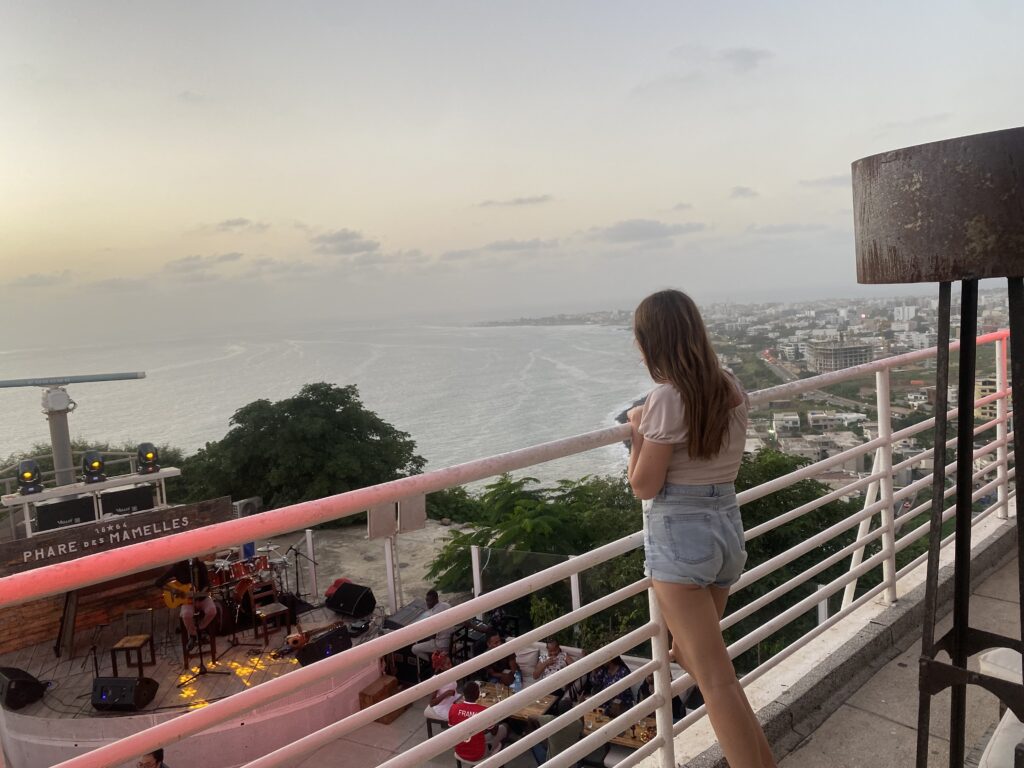
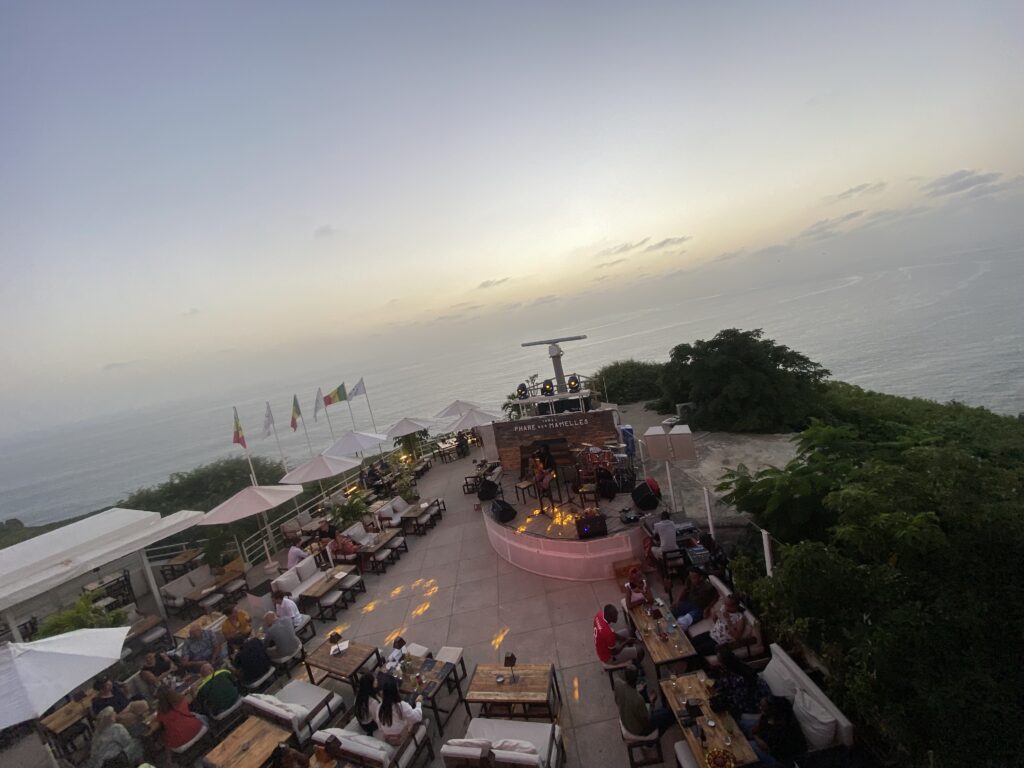
The African Renaissance Monument
This one has had some serious press…Africa´s answer to the Statue of Liberty, The Monument De La Renaissance Africaine, is billed as the highest (not tallest) sculpture in the world. The bronze bodies of an African family (164ft) sit atop the 300ft hill, commanding the city skyline since ´10.
Ex-president Abdoulaye Wade wanted the statue symbolize the “triumph of African liberation from five centuries of ignorance, intolerance, and racism” but many locals weren´t and still aren´t too chuffed about it and rightly so. They argue that this bronze beast – built by North Koreans — is an insult to the majority of the nation who are struggling financially (it cost $27million!) and the money could´ve been spent way better elsewhere.
We were in two minds about whether to make the trip but on arriving saw that it brought a huge amount of foreign and Senagalese tourism which you would hope gets reinvested back into the local communities. Families, friends and first dates perch on the steps leading up to the monument and chat over a juice and bag of peanuts – a proper Sunday afternoon hang out spot.
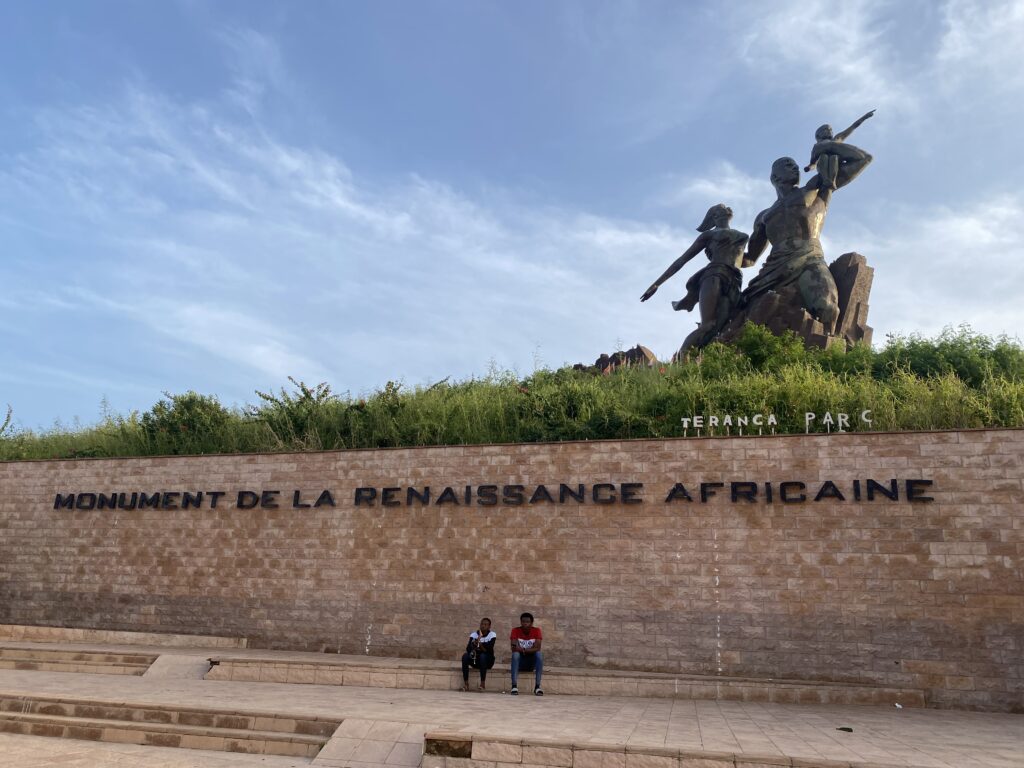
Le Village des Arts
This was by far my fave place in Dakar. We spent a Sunday afternoon hanging out with artists and sculptors in this oasis tucked away in a side street off the busy Route de L’Aerport. The village is made up of around 50 studios and has a proper community feel. It seems like everyone has an open door policy and they are all more than happy to speak and show you their craft. We were told weekdays are busier but there were still plenty of people about to visit on a Sunday.
First, we popped our head into Adi´s studio/house* (below) and had a chat with him about his mini library and inspiration behind his paintings – the works of Cheikh Anta Diop on black culture and language and a mixture between the mystical, the technological and the mundane. There were a few paintings which caught my eye and I wanted to be able to express this. I asked him to write down how to say ´I like this painting´ in Wolof and when we came back later on in the day to buy one, he had a beaming smile when I used the phrase.
Follow Adi on Insta here – @adilepeintre
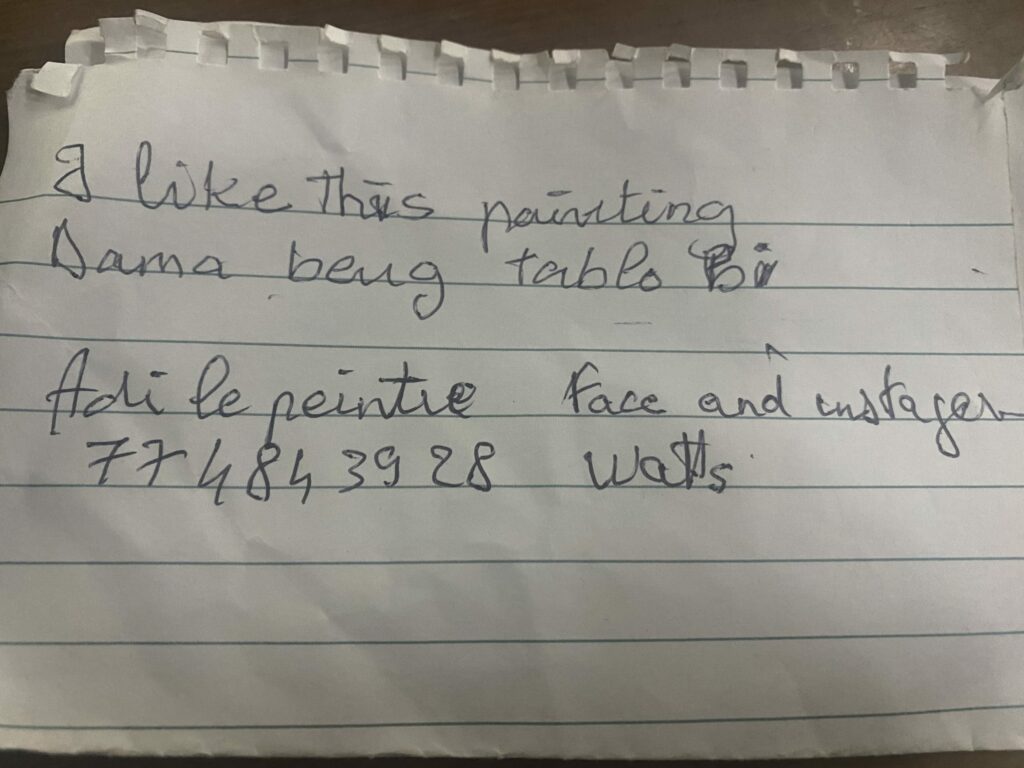
We also stopped off at a few other studios, listening to reggae and watching the tie dying of tubay (drawstring trousers), then sipping attaya with a group of guys who made furniture from car tyres, art from recycled glass and sculptures out of driftwood and coat hangers. Drinking attaya (Chinese green tea mixed with mint and sugar) is a Senagalese ritual to bring friends, family and strangers together. It´s brewed in three stages in a kettle over hot coal; each pot represents the stages of life. The first pot lewel is bitter, representing the difficulties of growing up and early life.The second (naarel ) is sweeter, representing the comfort of a stable life and family. The third stage nettle is the sweetest, which corresponds to the pleasure of wisdom and slowing down in old age.
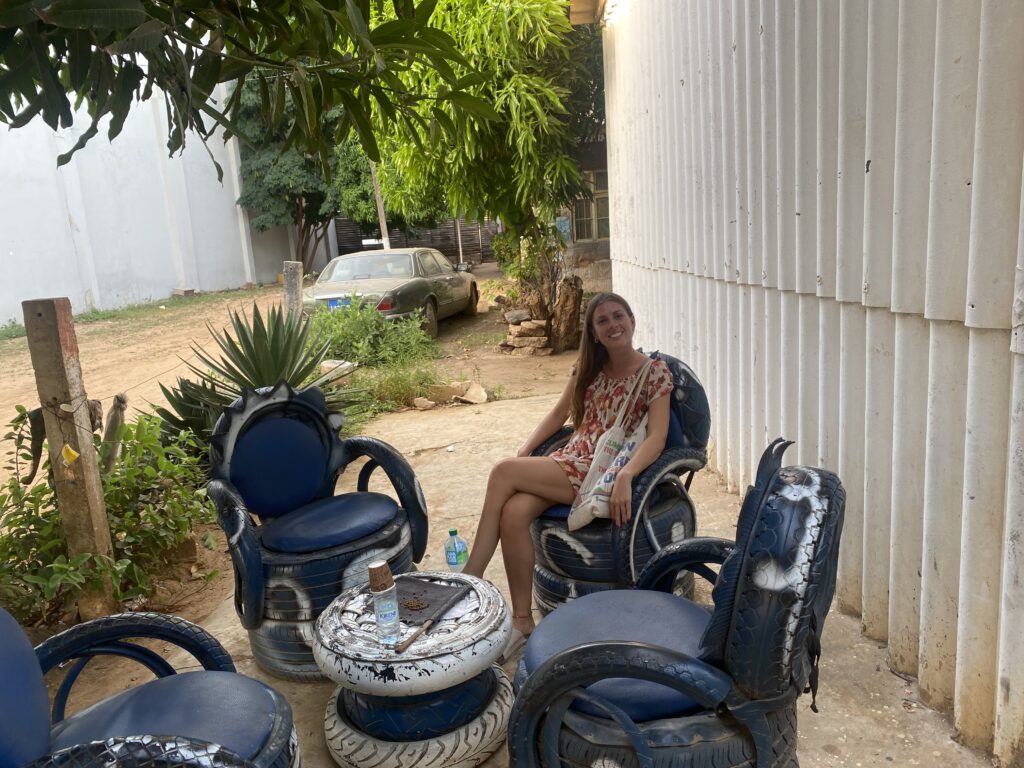
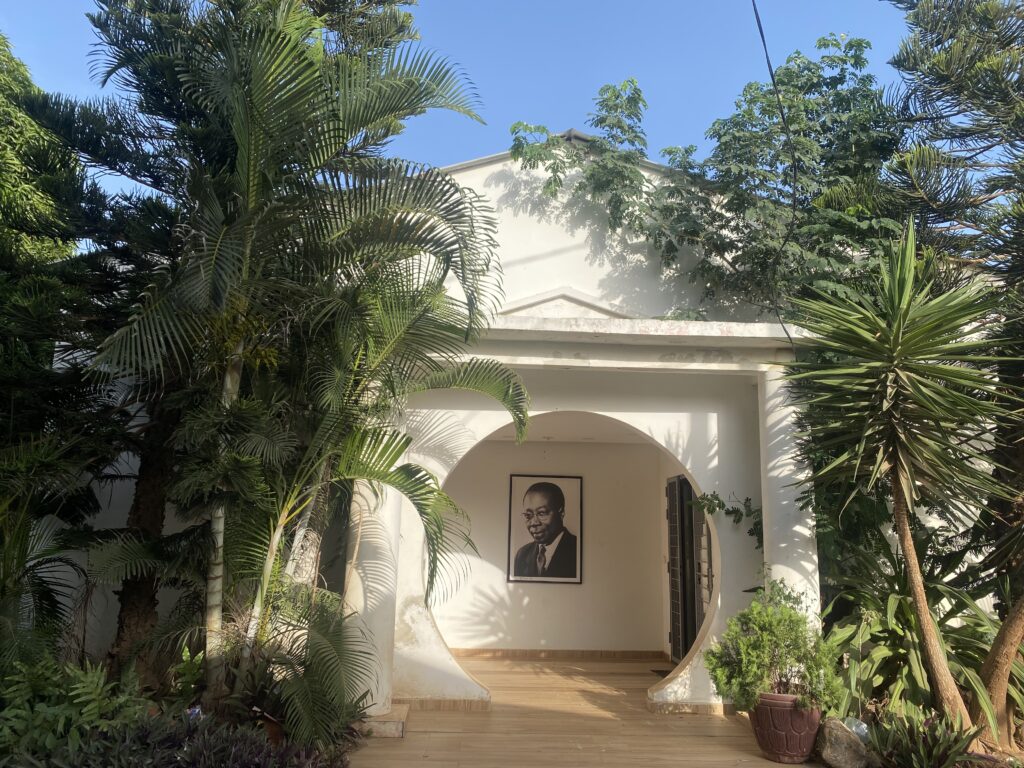
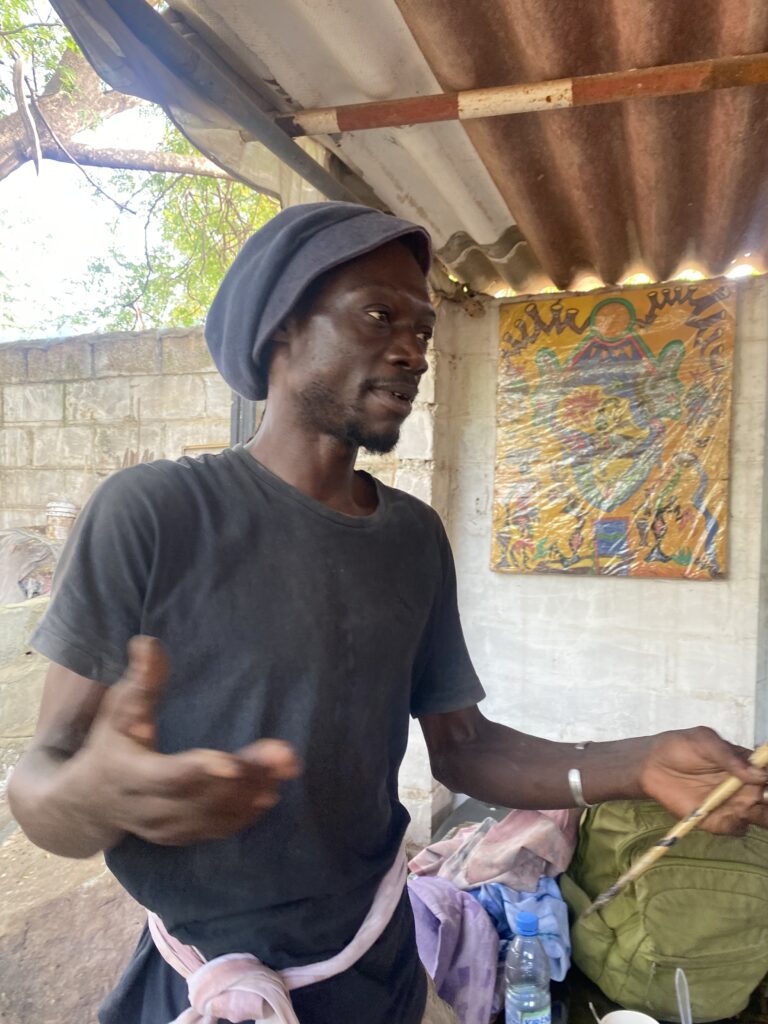
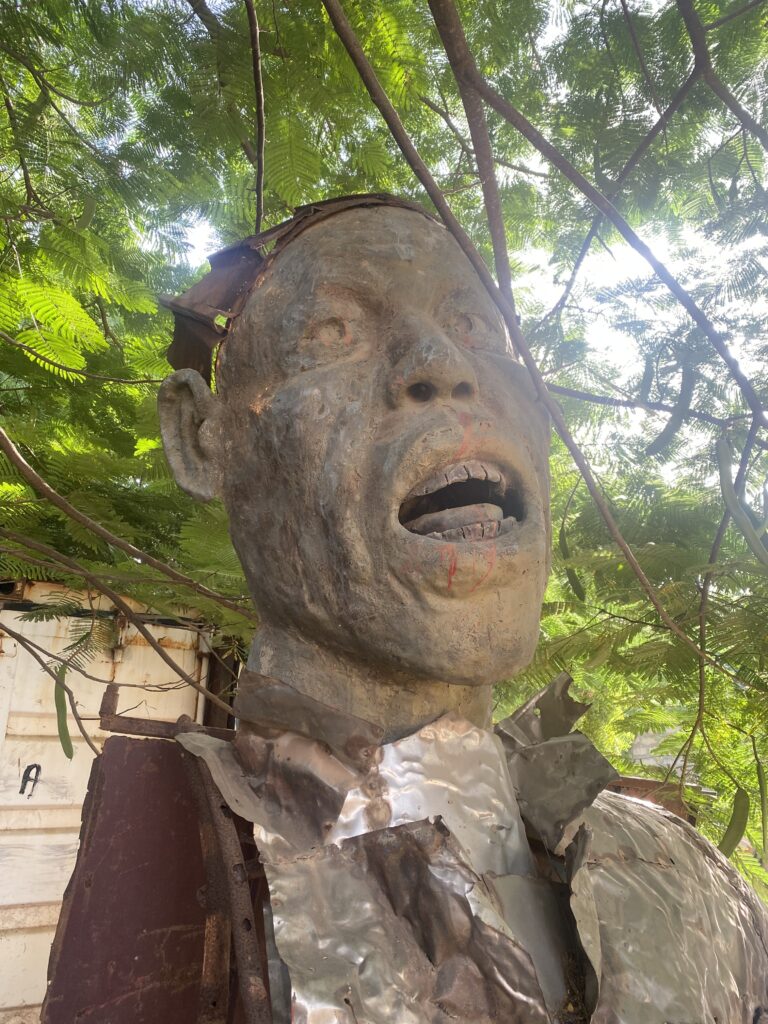
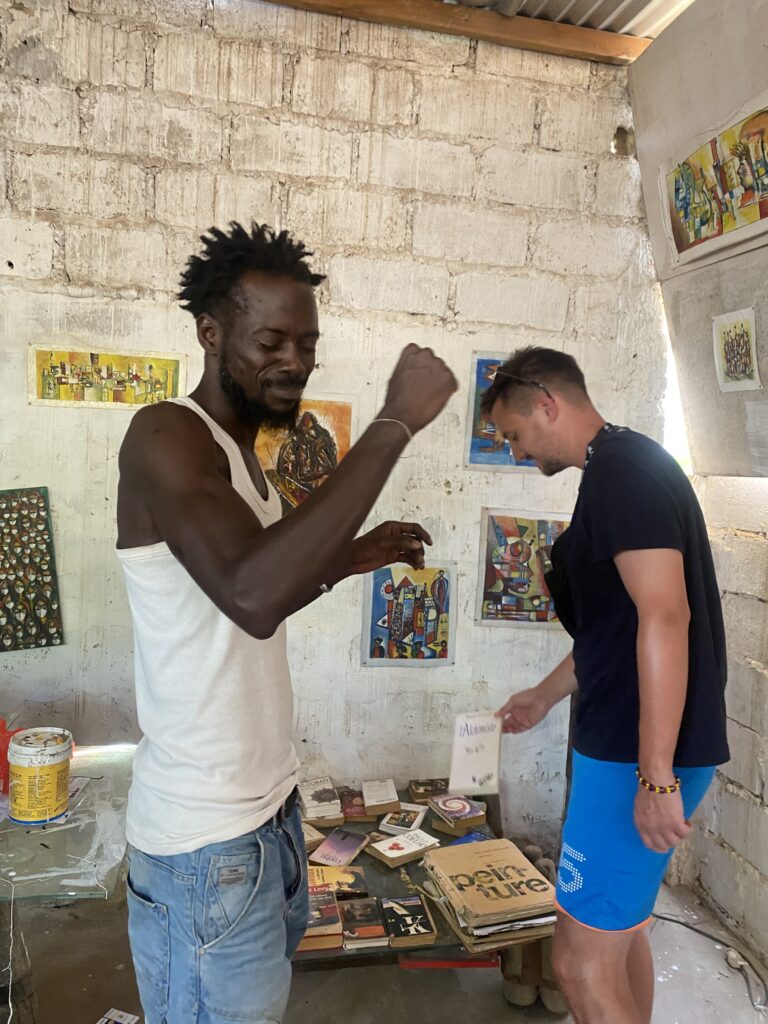
Gorée Island
It would be a crime to go to Dakar without getting a boat out to the Ile Gorée. Stepping off the ferry, I took a sniff of the freshest air we´d had all week and relaxed into the laid back vibe given off by Senegalese holidaymakers and daytrippers from Dakar. Walking past pastel coloured houses and alleyways lined with purple and pink bougainvillea and kids playing football and dancing happily in the streets, it´s strange to think about the island´s extremely dark past.
UNESCO claims that “from the 15th to 19th century, Gorée was the largest slave trading centre on the African coast” with an estimated 20 million slaves passing through the island between 1536 and 1848. Our tour guide greeted us at the door of Le Maison Des Esclaves (House of Slaves) and told us the harrowing stories of people being traded for bottles of wines and guns and families being pulled apart not knowing anything when stepping onto the rammed ships except for this would be the last part of their continent they would ever see. His family had all been brought up on the island and he was grateful to be able to share the stories of his people with visitors from around the world.
It´s also worth wandering up the artists trail to the Canon de Navaronnes and the old castle fortress for a glimpse of the island from above. I loved the artwork lining the path, made from old Nokia phones, cables, buttons and plugs.
Good to know:
- You can plan your trip with the timetable for boats leaving Dakar´s port Gare Maritime here
- There is an entrance fee to island of 500CFA per person and is 5.200 F CFA return trip.
- House of Slaves isn´t open on a Monday – we found out the hard way!
- Our guide at the House of Slaves charged 10,000CFA for a 30 minute tour
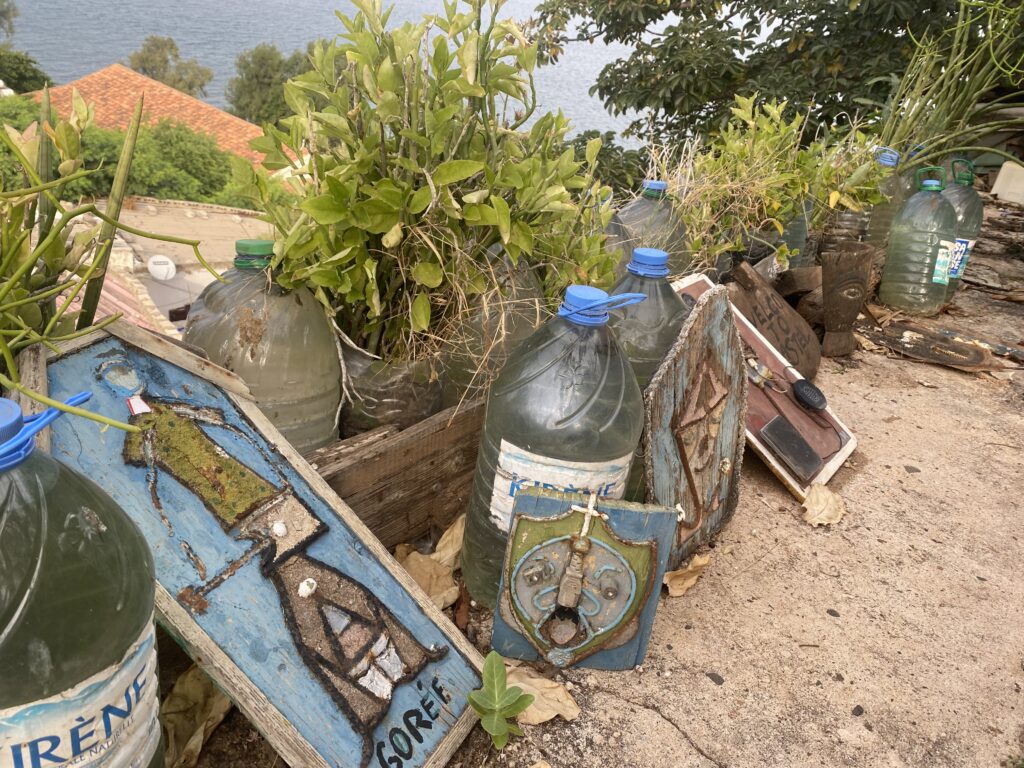
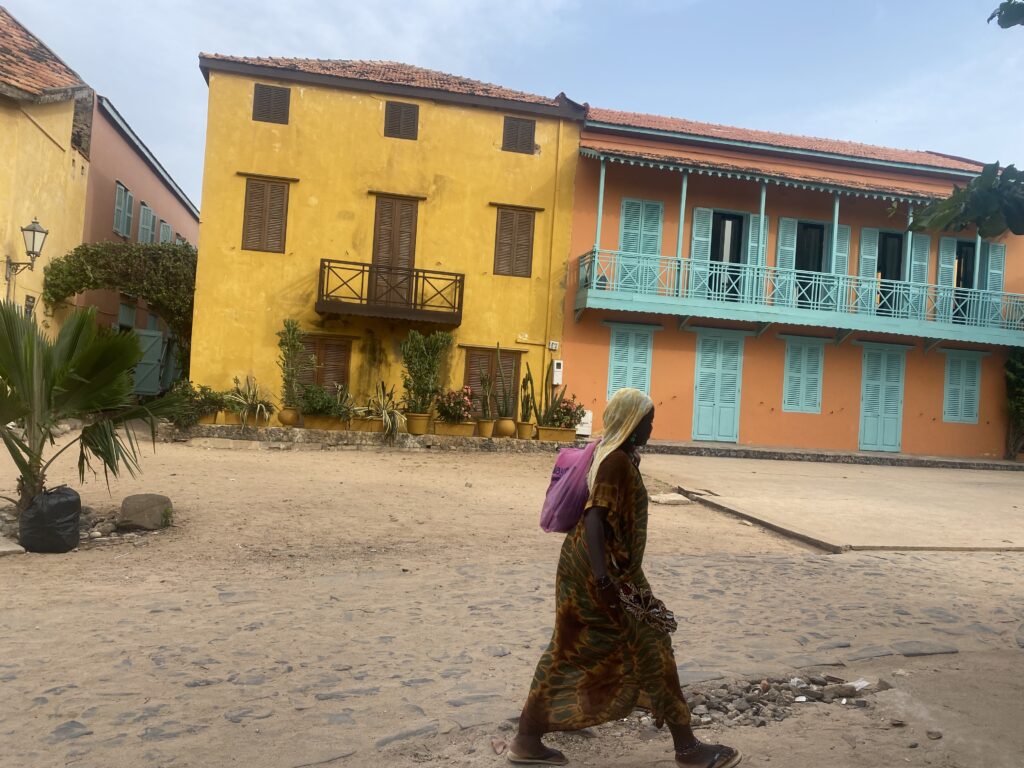
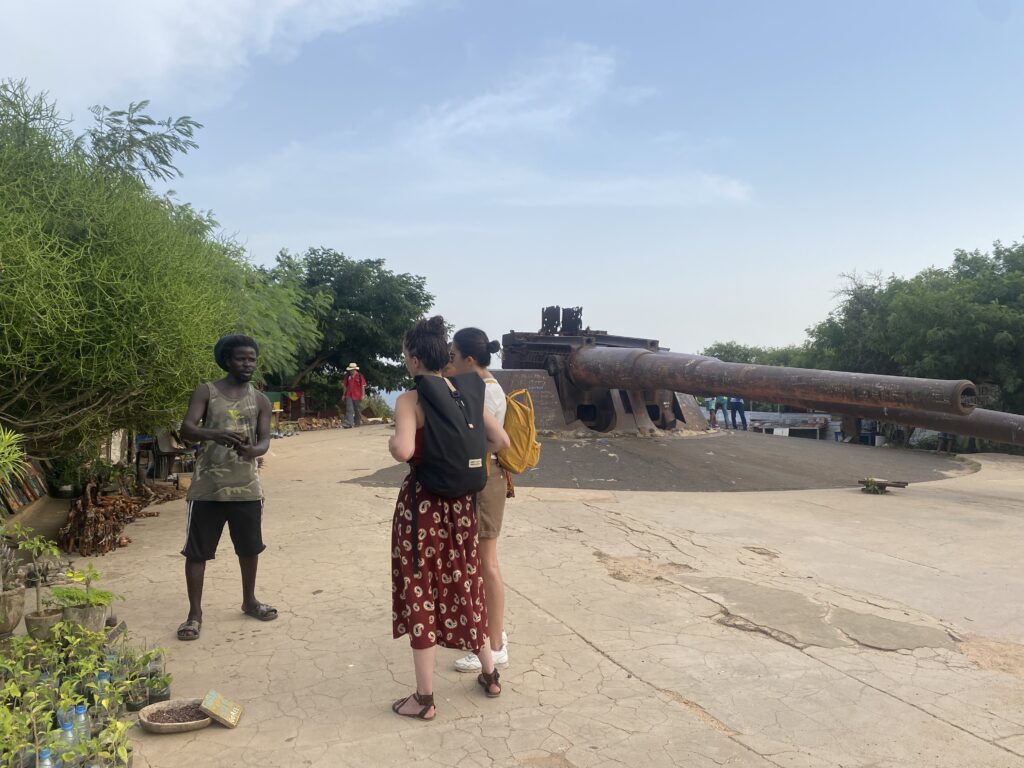
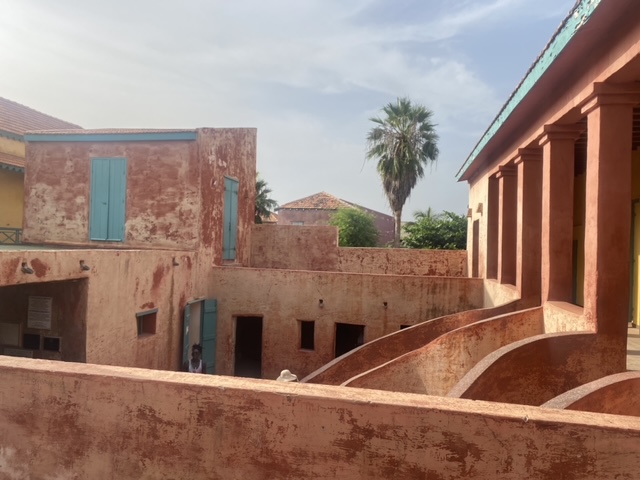

Saly
Saly is a 1h30 taxi ride from Central Dakar which should cost no more than 30,000CFA. It’s got a chilled, ´no worries´ vibe with miles of palm lined sandy beaches. In late October it was so quiet, which meant we got our pick of sunbeds every day and felt like we could properly unwind.
Things to do…
Stay on beach and go for a stroll. We loved people watching at dusk. Locals spring to life in the late afternoon and early evening, jumping backwards on the beach, doing press ups, working out in the outdoor door gyms, playing football and volleyball. They will shout and invite you to get involved with them if you’re up for it!
Artists association to the right of the boats close to Chez Sasha restaurant
Billy and the boys can be found by all boats about 10 minutes to the right of Hotel Royam. He spoke Spanish which meant we could have a decent chat. He brought us into their tiny studio where his friends were carving sculptures of all sizes into the night. He explained that Muslims and Christians live happily together in Sengal and often inter-marry and they may have sculptures to represent the make up of the hosuehold – religion and who is ´the leader of the house´, mum or dad (!)
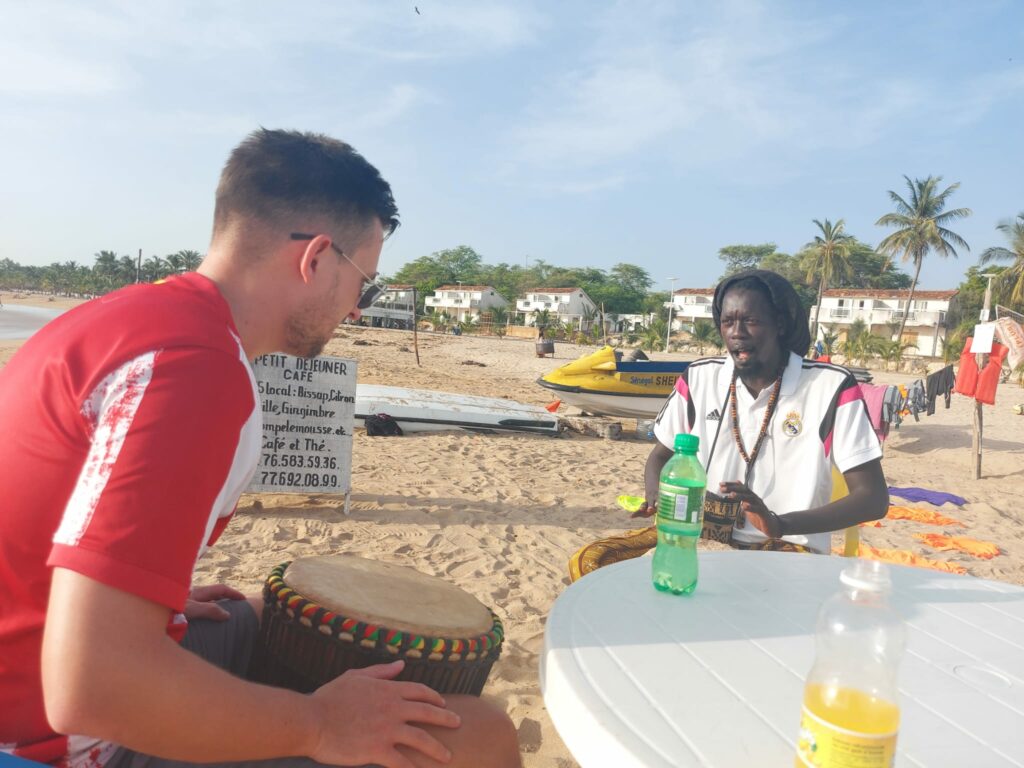
Saly – Association Saly Tefess
Head to the pirogues (colourful fishing boats) to the left of Hotel Royam´s beach. The owner is a friendly ex-footballer who offers free kayaks, jet skis etc. to all for free (or for a give what you like donation to the association). He also provides local kids with swimming, water sports and volleyball training and many of them are aiming for the 2026 Youth Olympics in Saly.
We were lucky to meet Falou our first time there, a friend of the owner and a local tour guide. We spent a late afternoon chilling with him drinking pineapple juice and learning how to play the tam tam. He´s the drummer for the Benen Crew (below) a group of rappers who tackle societal issues through their lyrics in Wolof, French, Spanish and English (below). Falou is also mates with reggae group Mambayefall and Henen and was keen to share stories about Saly as well as songs with us. One thing he repeated throughout the two times we met him stuck with me after leaving Senegal…
We are all together.

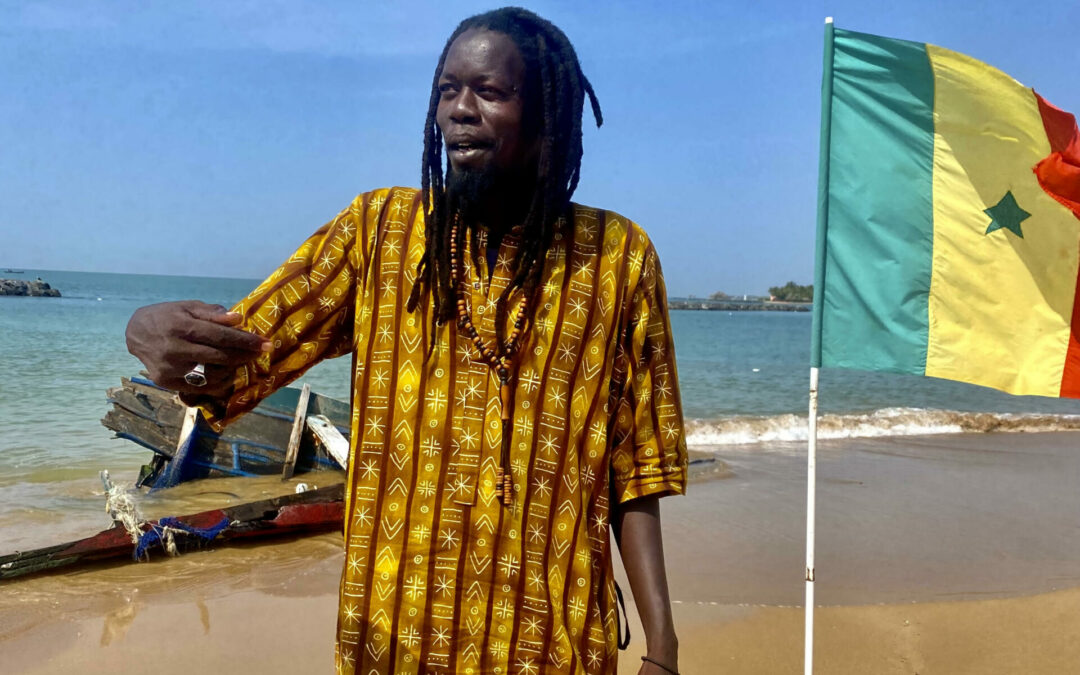
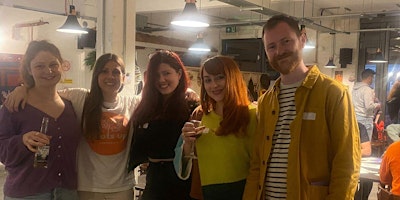
Recent Comments